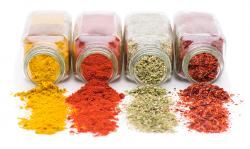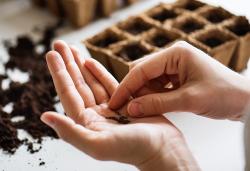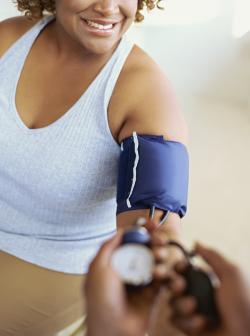Staying Healthy - Consume Less Sodium
Recipes and Nutrition Tips - How to Make Your Own Seasoning Blends
Physical Activity Tips - Protect Your Heart with Physical Activity
Food Access Resources in Massachusetts - Learn about the Pandemic Electronic Benefits Transfer Program (P-EBT)
Staying Healthy
Our bodies need a small amount of sodium to function properly. However, too much sodium (salt) can lead to high blood pressure. High blood pressure can increase the risk for heart disease, stroke, and kidney disease. Follow these tips to choose less sodium.
- Limit high-sodium foods: processed meats like cold cuts, bacon, and sausages, regular canned soups and broths, sauces, instant flavored rice and noodles, frozen meals, and packaged breads and snacks.
- Choose low-sodium foods: fresh and plain frozen fruits and vegetables, lean cuts of meats, low-fat dairy products, unsalted nuts, low-sodium soups and broths, and low-sodium canned vegetables and beans.
- Broil, steam, roast, or sauté foods to bring out the natural flavors without adding salt.
- Replace salt with herbs and spices when cooking at home.
- Read Nutrition Facts labels and choose foods with less sodium, shown by % Daily Value (DV). Look for foods with a %DV less than 20%. Check restaurant websites for sodium content of meals on their menus.
Recipes and Nutrition Tips
 Make your own seasonings to spice up your meals without salt.
Make your own seasonings to spice up your meals without salt.
Use herbs and spices when cooking to enhance flavor without adding salt. What are your favorite herbs or spices? Which ones to do you want to try? Try these seasonings instead of salt: black pepper, garlic powder, curry powder, cumin, dill seeds, basil, ginger, coriander, onion, tarragon, and oregano. Spices and herbs can lose flavor over time, so be sure to check the flavor of your herbs and spices at least twice a year. Try these Make-Your-Own Seasoning Blend recipes.
Make your taco seasoning and try it with these turkey stuffed peppers! https://video.link/w/R8jMb
Physical Activity Tips
 Physical activity can help protect your heart.
Physical activity can help protect your heart.
Physical activity helps you maintain a healthy weight and lower your blood pressure; it also helps improve blood flow and raise good cholesterol levels.
Here are some examples of physical activities to incorporate into your lifestyle:
- Walking is a great way to improve and maintain your health.
- Biking or cycling is a fun way to get outdoors and moving.
- Jumping rope is an amazing cardio exercise that gets your entire body moving.
- Working out to videos from your local library or through free exercise classes online is a great way to try new exercises.
- Swimming will strengthen your body and is easy on your joints.
 Get a jump-start on your garden this season.
Get a jump-start on your garden this season.
Starting seeds indoors can be more affordable than purchasing plants. Seeds also give you access to a wider variety of fruits and vegetables. Start planting seeds indoors six to eight weeks before your average last frost date. Read the seed packets for each crop for planting recommendations. Here is a list of supplies you may need:
- Seeds
- Pots
- Seed-starting soil mix
- Spray bottle or watering can to keep soil moist
- Large table positioned in a south-facing window or a table with grow lights
For more information, visit https://ag.umass.edu/home-lawn-garden/fact-sheets/starting-seeds-indoors-caring-for-your-seedlings.
Food Access Resources in Massachusetts
 The Pandemic Electronic Benefits Transfer (P-EBT) Program
The Pandemic Electronic Benefits Transfer (P-EBT) Program
All Massachusetts families with school-aged children who qualify for free or reduced-price school meals under the National School Lunch Program are eligible for the Pandemic Electronic Benefits Transfer Program. This program is open to any student in a school that provided free meals to all students.
For more information about eligibility, receiving your benefits, checking your balance, or learning more about P-EBT, visit https://www.map-ebt.org/, which provides information in six languages.
